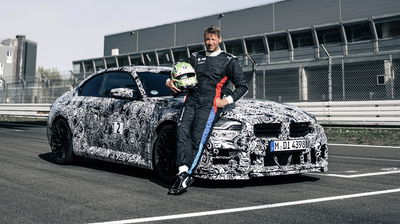The VW ID R Clocked The Equivalent Of 17MPG During Its Record 'Ring Lap

The raw pace of the ID R cannot be questioned. VW’s all-electric circuit weapon has already smashed records at Pikes Peak, the Goodwood hill climb and the Nurburgring, with more feats in the pipeline.
What’s arguably more interesting than the speed, however, is the amount of energy it uses while going so fast. Which in the case of the Nordschleife run was not a whole lot.
Clearly keen to extract maximum PR potential from the ID R’s 6min 5sec ‘Ring lap a few months ago - the fastest ever for an electric vehicle - VW has revealed that the car used up just 24.7kWh during the effort. To put that in some sort of context, VW says that’s about a quarter of the energy used up by a much slower, petrol-powered GT3 car during a lap of the Nordschleife.
To put that in a little more context, we’ve crunched the numbers and worked out that the ID R clocked 17mpg equivalent, which considering the speeds involved is astonishing.

VW also notes that driver Romain Dumas was subjected to centrifugal forces of up to 3.49g during the run. This means in parts of the track, the Frenchman’s head would have felt like it weighed over 20kg. “To simulation that kind of situation, I have fitted an old helmet with weights. I use it to train my neck muscles in my fitness corner in the basement of my house,” Dumas explained.

Away from the neck-straining corners on the ‘Ring are - of course - plenty of massive straights. To help the ID R go faster while using less energy, the car’s drag reduction system (DRS) was opened over 20 times. In all, the adustable element of the rear wing - which sits much lower than the one used for the Pikes Peak effort - was open for 88 seconds of the lap, equating to 24.3 per cent.
With the DRS open, Dumas was able to hit 170mph at the Fuchsröhre second of the Nordschleife. The average speed for the whole lap was 127.3mph.















Comments
This kind of data is interesting
That would be 13.8 l/100 km.
Thanks - was about to google what 17mpg is in common terms ;)
Lol better than my cvt Nissan rogue it dose about 15 per 100km
Which car would win a 24 hour race? The gt3 or the idr? Would be quite interesting to see
Seeing as the VW could only do 1 lap on a charge, I reckon the GT3
17 miles per gallon? I am blown away. The future is now, old man.
Not rly, the car only did 17mpg because of its energy regeneration and because the track had a lot of bracking zones. If it raced a monza for example it would get much worse mpg (correct me if wrong)